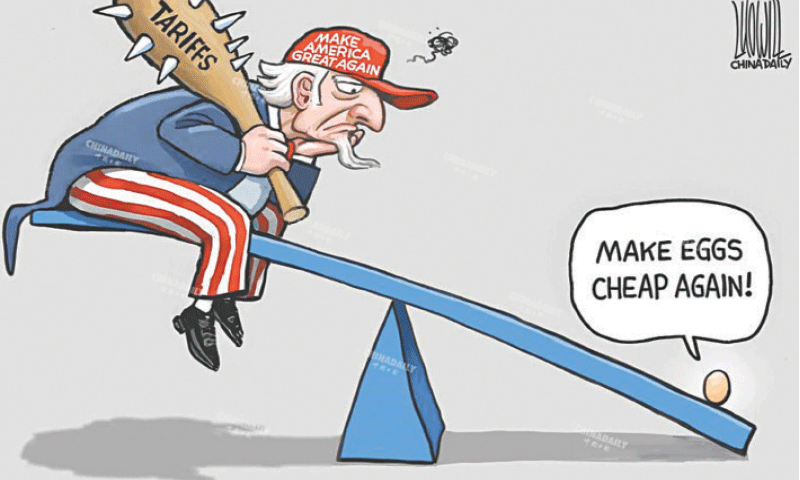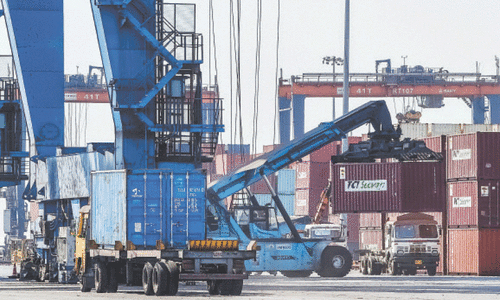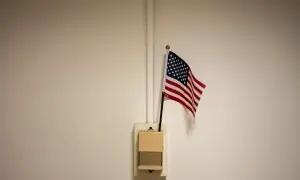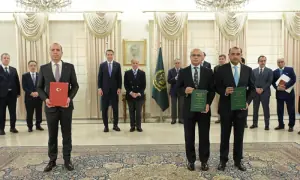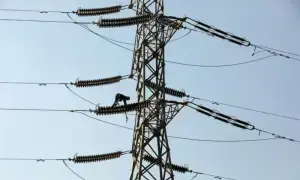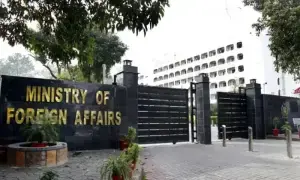• American trade imbalance rooted in domestic woes
• Trump’s inherent policies may lead to recession
• Collective efforts needed for trade liberalisation
THE “reciprocal tariffs” imposed by the Trump administration violate the rules of the World Trade Organisation, posing a serious challenge to the multilateral trading system and representing a self-defeating approach.
Trump’s tariff policies lack a basic understanding of macroeconomic principles and arbitrarily attribute the trade imbalances caused by domestic reasons in the US to other countries. The root cause of the substantial trade deficit lies in the excessively low savings rate within the country, rather than a lack of “reciprocity” among trading partners.
Since Trump’s first term, despite the ongoing “tariff war,” the US trade deficit in goods has only increased instead of decreasing. The economic policies of the Trump administration exhibit inherent contradictions, as measures such as tariffs combined with tax cuts, and mass deportations of immigrants, are bound to drive up inflation in the US.
The policy uncertainty is also manifesting negative impacts on the US stock market. Several economists have warned that the “tariff war” will strengthen the US dollar, raise prices of crucial intermediate goods, and further diminish US exports.
In the face of the “tariff war” initiated by the US in recent years, China has responded calmly without yielding to pressure, demonstrating resilience in foreign trade exports. In the current and forthcoming periods, China needs to continually enrich its policy toolkit and effectively implement “asymmetric countermeasures” against the US.
It should accelerate various reforms as planned, promote diversification in foreign trade, actively establish a new open pattern, and lay a more solid foundation to effectively address the strategic competition from the US.
Trump’s additional tariffs announced on Wednesday were both expected and unexpected. It was anticipated that Trump would impose tariffs as part of his established policy, given his recent emphasis on intensifying tariff measures to correct the US economy and his strong belief in the role of tariffs in the US economy and international trade. However, the extent of the increased tariffs, especially towards China, may have surpassed expectations, including those of its allies, potentially causing disruptions and prompting negotiations with the US.
Undoubtedly, many countries will retaliate against the US, leading to significant negative impacts on the US economy and the global trade rules and system. This could disrupt the post-war international trade order.
Trump is currently facing inherent contradictions between his policies. While he needs to impose tariffs to boost the economy, this action could lead to inflation. Increasing tariffs on imports to the US will inevitably raise prices for consumers, potentially contributing to inflation.
Additionally, attracting investments to the US while maintaining economic growth and lowering interest rates poses a challenge. The policies implemented could lead to inflation, making it difficult for the Federal Reserve to make decisions regarding interest rates.
These conflicting policies and the uncertainty they bring could potentially lead to a financial market downturn deliberately manufactured by Trump. This anticipation may serve his political interests in the short term, allowing him to shift blame onto his predecessor Joe Biden for any economic downturn.
Before the upcoming midterm elections, Trump may introduce stimulating policies to revive the economy according to his ideals. This short-term economic downturn may align with Trump’s political interests, at least in the current context and leading up to the midterm elections.
The core motivation behind the US government’s recent tariff escalation lies in its discontent with the current international trade paradigm. Policymakers contend that America faces structural disadvantages within the existing system, particularly manifesting in comparatively lower US tariff rates versus higher tariff barriers maintained by other nations.
This perceived imbalance purportedly undermines the competitiveness of American products in global markets. The new tariff regime pursues threefold objectives: reducing the US trade deficit, enhancing the export competitiveness of domestic products, and catalysing manufacturing repatriation.
The implementation of this policy will trigger significant ripple effects. Export-oriented economies — including the European Union, China and various developing nations — face immediate repercussions. Elevated tariff barriers directly increase production costs and complicate trade logistics for goods destined for American markets. While retaliatory measures remain undefined, historical precedents suggest coordinated countermeasures could partially neutralise the policy’s efficacy. However, the more probable scenario involves partial acquiescence from trading partners, potentially emboldening America’s unilateral protectionist tendencies.
Confronted with these challenges, China must adopt a multi-pronged counterstrategy. Primary priorities include stabilising domestic market expectations through enhanced confidence-building measures and cultivating endogenous demand to mitigate external shocks.
Concurrently, efforts should focus on reinforcing supply chain resilience through diversified production ecosystems, thereby reducing overdependence on singular markets. This structural adjustment will organically drive industrial upgrading while consolidating China’s position in global value chains.
Internationally, proactive expansion of trade partnerships and exploration of alternative production networks become imperative. The current unilateral tariffs fundamentally erode the WTO-centered multilateral trade architecture, particularly violating the most favored nation (MFN) principle.
To safeguard the international trade order, China should galvanise collective efforts towards trade liberalisation. Practical measures include intensifying the implementation of regional trade agreements under WTO frameworks and strategically lowering tariffs to counterbalance protectionism — a tactic proven effective during previous Sino-US trade tensions.
Published in Dawn, April 7th, 2025

